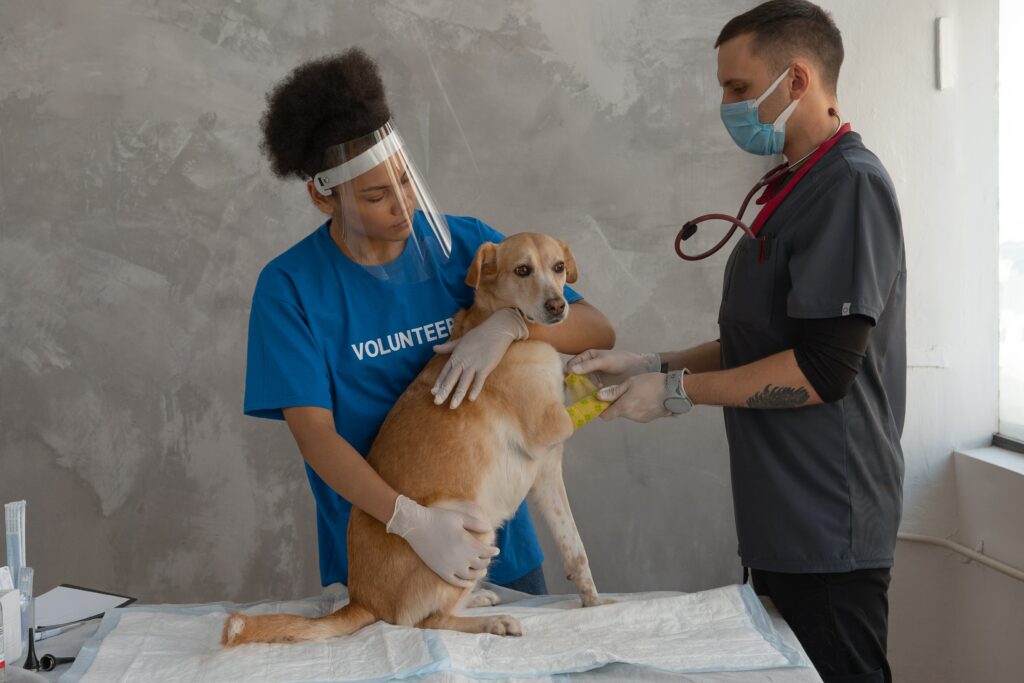All owners want to keep their pets feeling and looking happy and healthy. However, there are situations where accidents can occur and your pet may stand up a little slowly or walk with a limp.
While this can be emotional and stressful for owners, it’s important to be aware of the different injuries dogs can acquire. This way, you are well equipped to help get them the best care possible.
Common injuries in dogs are that of strains and sprains. Often mistaken for the same thing, these two different injuries need to be treated with specific techniques in order to get the best results.
Strains in dogs
Describing an injury to the tendons that link muscles and bones, strains are commonly seen in a dog’s hips and thighs. This type of injury can be sustained during an innocuous activity like stretching or a more strenuous past time such as jumping for a ball during a game of catch.
The first sign of a strain is general lameness. For some dogs, they may have trouble sitting up or laying down. As a result, activity levels might decrease and playtime will generally be off the cards. When walking, your dog may also limp or favour a certain paw.
When it comes to dealing with strains, symptoms will typically subside within a few days or a week. For minor strains, vets will look to provide treatment through supportive bandages. For major strains, owners will need to keep dogs calm and quiet for around two weeks.
No owner wants to see their dog limping and generally unhappy. As such, there are things owners can do to prevent strains from occurring. For instance, changing the intensity of exercise or opting for activities that aren’t so hard on the body.
Owners can also prevent incidents of strain by implementing weight management tools. This could mean changing foods to something more nutritional. It could also mean cutting down on treats.
It is also worth noting that physio can be used as both a prevention and treatment technique. Physio can help to support soft tissues such as tendons. It can also be used to re-establish normal movement.
Sprains in dogs
Commonly occurring in the wrist and knee, sprains in dogs can be quite serious. This is because a sprain actually harms the ligaments that connect bones. As such, a sprain can result in joint damage.
A dog may suffer a sprain by stepping in a hole, falling down the stairs or off the couch or by jumping. Sprains can be chronic or acute and the first sign is your dog suddenly limping or appearing lame.
When it comes to sprains, there are three grades that a sprain can fall into. A Grade I sprain denotes that the ligament has a mild tear. As such, your dog will still be able to walk, albeit with some pain. With treatment such as a splint to restrict movement or a course of anti-inflammatory medication, your pooch will return to normal in a matter of weeks.
A Grade II sprain means that your dog has a significant tear. Swelling will typically be visible and your dog will either limp or limit movement altogether. Depending on the severity, surgery may be recommended, or a splint and medication will suffice. However, healing will take some time.
A Grade III sprain is extremely serious as there is often damage or a torn ligament. Dogs suffering this type of strain won’t be able to put any weight on their paw. They will also typically be vocal and cry out or whine in pain. In this instance cranial or anterior cruciate ligament surgery will be the only course of action. Recovery will be months.
Highly trained professionals, vets will be able to undertake physical exams and order imaging to determine the exact grading of your dog’s sprains. With 82% of dogs requiring one or more vet visits every year, veterinary professionals are well versed in all types of injuries.
Whether your dog’s sprain requires a splint, medication or surgery, physio can prove beneficial. Not only will it help with pain management and establishing normal movement patterns, it will also treat areas that are under strain from compensating movements such as limping.
Much like with strains, sprains can be prevented by managing your dog’s weight through their food quality and intake. Limiting strenuous exercise and instead opting for low-impact activities is also beneficial.
Strains and sprains in dogs
Dogs are incredibly active creatures. They love to run along the beach, bound down the stairs to greet their owners and jump up on the couch for a bit of snuggle time. However, each of these activities can result in injuries like strains and sprains.
No owner wants to see their dog limp around or hear them cry, so, to help them remain healthy, it’s important to learn about the different injuries dogs can sustain. When armed with the right advice, you can take quick action.

